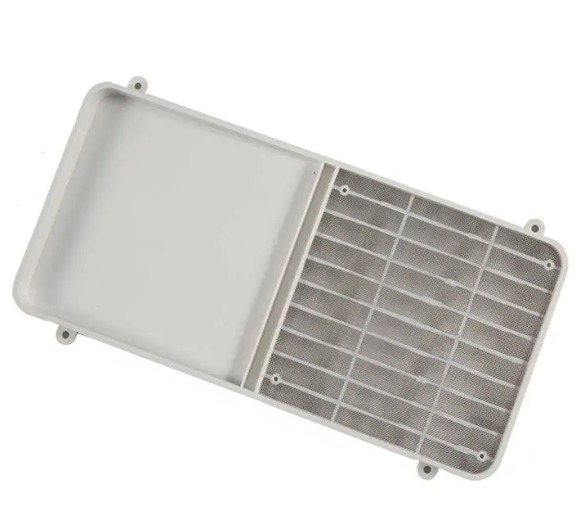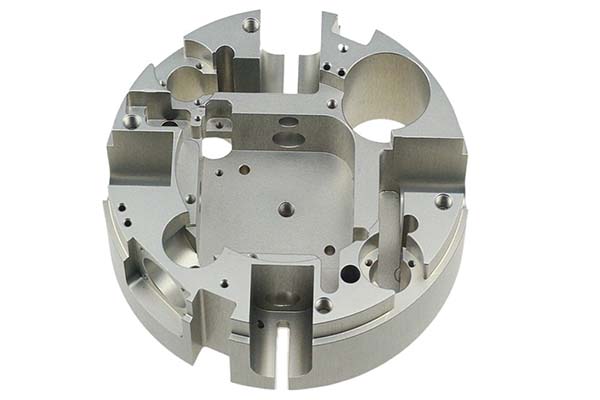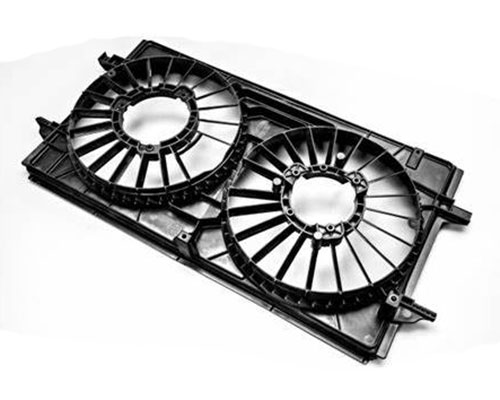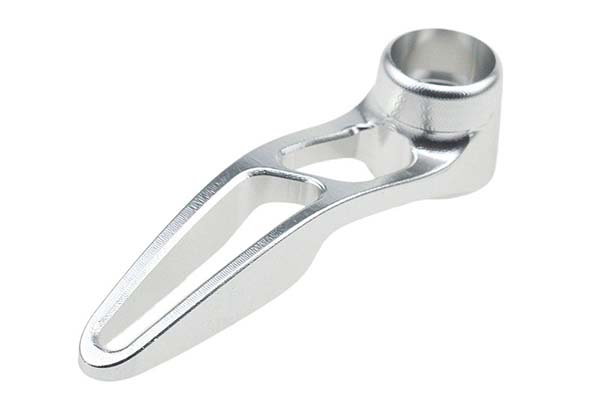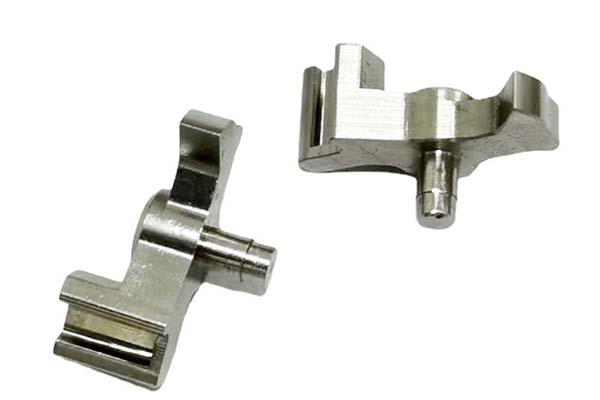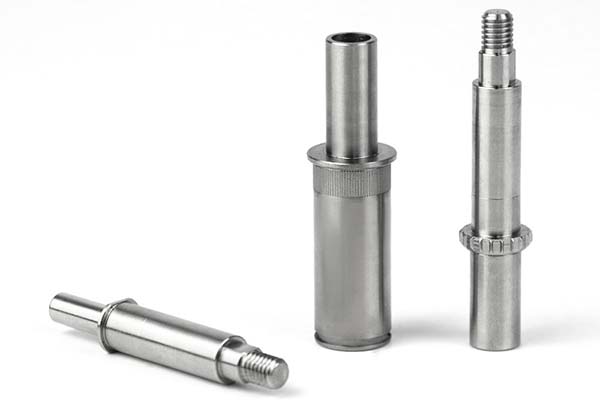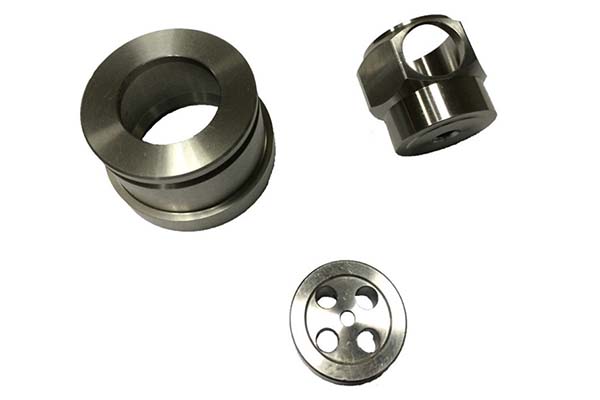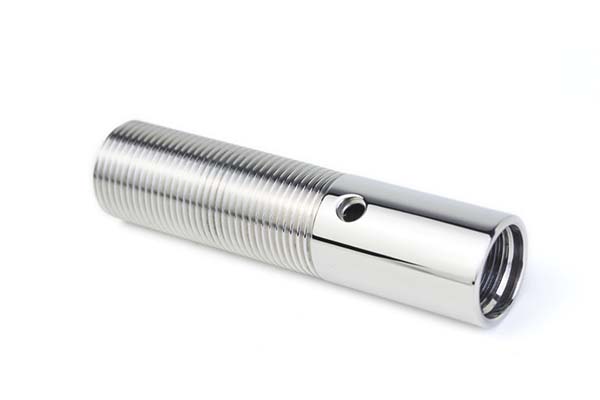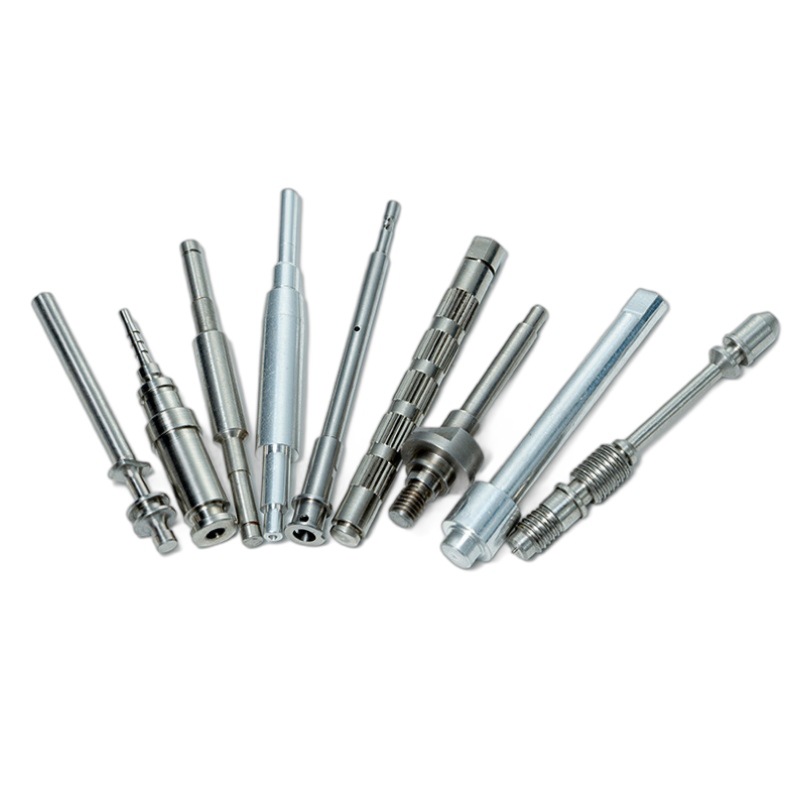Introduction
In the realm of modern manufacturing, precision parts machining stands as a cornerstone, playing a pivotal role across a vast spectrum of industries. From the high - tech aerospace sector, where the tiniest deviation in a part can have catastrophic consequences, to the intricate world of medical device manufacturing, where precision is crucial for patient safety and treatment effectiveness, and the fast - paced electronics industry, which demands ever - smaller and more precise components, precision parts machining is indispensable.
Precision parts machining involves the creation of components with extremely tight tolerances, often measured in micrometers or even nanometers in some advanced applications. This high - level of accuracy ensures that the final products function optimally, whether it's an aircraft engine running smoothly at high altitudes, a medical implant integrating seamlessly with the human body, or a smartphone with a sleek and compact design enabled by precisely machined internal components.
As technology continues to evolve at an unprecedented pace, the landscape of precision parts machining is also in a constant state of flux. New trends are emerging, driven by advancements in materials science, automation, and digital technologies. Understanding these future trends is not just a matter of curiosity for industry insiders but is essential for businesses aiming to stay competitive. For manufacturers, keeping abreast of these trends can mean the difference between thriving in the market and being left behind. It allows them to invest in the right technologies, train their workforce effectively, and develop products that meet the evolving demands of their customers.
In the following sections, we will delve deep into the future trends of precision parts machining, exploring how factors like automation, materials innovation, and additive manufacturing are reshaping this critical field.
Technological Advancements
1. Integration of AI and Machine Learning
The integration of AI and machine learning is revolutionizing precision parts machining. These technologies can analyze vast amounts of data from various sensors on machining equipment. For example, they can optimize machining parameters in real - time. A study by a leading manufacturing research firm found that in a precision machining plant that adopted AI - powered parameter optimization, the machining efficiency increased by 20%, and the error rate decreased by 30%.
AI and machine learning algorithms can also predict equipment failures before they occur. By continuously monitoring factors such as spindle vibration, temperature, and tool wear, these systems can issue early warnings. This predictive maintenance not only reduces unplanned downtime but also extends the lifespan of the machinery. For instance, a large - scale automotive parts manufacturer reported that after implementing an AI - based predictive maintenance system, their equipment downtime was reduced by 40%, saving significant costs associated with repairs and production delays.
In terms of quality control, AI - driven machine learning models can analyze the surface finish and dimensional accuracy of precision parts. They can quickly identify defects that might be overlooked by human inspectors. Some advanced systems can even classify the type of defect, providing valuable insights for process improvement.
2. The Rise of 5G in Machining
5G technology is making significant inroads into precision parts machining. With its high - speed data transfer, low latency, and large - connection capabilities, 5G enables real - time remote monitoring of machining processes. Machinists can now monitor the status of their equipment from anywhere in the world, ensuring that operations are running smoothly and making adjustments promptly if any issues arise.
For example, in a large - scale aerospace manufacturing facility, 5G allows for the seamless transfer of high - definition video feeds and sensor data from the machining shop floor to engineers' mobile devices. This enables them to respond immediately to any anomalies, such as a sudden change in tool wear or a deviation in part dimensions.
The high - speed data transmission of 5G also facilitates the implementation of advanced control systems. Complex machining programs can be transferred to the machine tools instantaneously, reducing the waiting time between operations. In addition, 5G - enabled machines can work together in a coordinated manner, achieving a new level of collaborative manufacturing. This means that different machines can share data and synchronize their operations to produce complex precision parts more efficiently.
3. Development of Nanotechnology in Precision Machining
Nanotechnology is playing an increasingly important role in precision machining. It allows for the creation of parts with extremely high precision and surface quality. In the field of micro - electromechanical systems (MEMS), nanotechnology enables the machining of components with features measured in nanometers.
For example, in the production of semiconductor chips, nanomachining techniques are used to create intricate circuit patterns. These patterns are so precise that they can fit billions of transistors onto a single chip, enabling the development of smaller, faster, and more powerful electronic devices.
Nanotechnology also improves the surface finish of precision parts. By using nanoscale abrasives or chemical - mechanical polishing techniques, manufacturers can achieve surface roughness levels that were previously unattainable. This is crucial in applications such as optical components, where even the slightest surface imperfection can affect the performance of the device. In the medical device industry, nanotechnology - enhanced precision machining can produce implants with smoother surfaces, reducing the risk of tissue rejection and improving patient outcomes.
Material Innovations
1. Emerging High - Performance Alloys
In the world of precision parts machining, emerging high - performance alloys are making a significant impact. Titanium alloys, for example, have become increasingly popular in the aerospace and automotive industries.
Titanium alloys offer a unique combination of properties. They have a high strength - to - weight ratio, which means they can withstand significant stress while remaining relatively lightweight. In the aerospace industry, this is crucial for reducing the weight of aircraft components, thereby improving fuel efficiency and increasing the range of the aircraft. For instance, in the construction of aircraft engines, titanium alloys are used in the manufacturing of compressor blades. A study by an aerospace research institute found that by using titanium alloys in compressor blades, the weight of the engine components was reduced by 20% compared to traditional steel - based components, while maintaining the same level of mechanical strength. This weight reduction directly contributes to a 10 - 15% increase in fuel efficiency for the aircraft.
Nickel - based alloys are another class of high - performance materials with remarkable properties. They exhibit excellent high - temperature strength, corrosion resistance, and oxidation resistance. In the aerospace industry, nickel - based alloys are widely used in the hot - section components of jet engines, such as turbine blades and combustion chambers. These components are exposed to extremely high temperatures during engine operation. Nickel - based alloys can maintain their structural integrity and mechanical properties at temperatures up to 1000°C, ensuring the reliable operation of the engine. In the automotive industry, nickel - based alloys are used in high - performance engine components, such as exhaust valves. They can withstand the high - temperature and corrosive environment of the exhaust system, extending the lifespan of the components and improving the overall performance of the engine.
2. Application of Composite Materials
Composite materials, especially carbon fiber - reinforced composites (CFRPs), are gaining traction in precision parts machining. CFRPs are composed of carbon fibers embedded in a matrix, usually a polymer resin.
These materials offer several distinct advantages. First and foremost, they have an extremely high strength - to - weight ratio. The tensile strength of CFRPs can reach up to 3000 - 5000 MPa, while their density is only about 1.5 - 2.0 g/cm³, which is much lower than that of most metals. This makes them ideal for applications where weight reduction is crucial, such as in the aerospace and automotive industries. In the aerospace sector, CFRPs are used to manufacture aircraft wings, fuselages, and tail sections. By using CFRPs, the weight of the aircraft structure can be reduced by 20 - 30%, leading to significant fuel savings and improved flight performance.
CFRPs also have excellent fatigue resistance. They can endure repeated loading and unloading cycles without experiencing significant degradation in their mechanical properties. This makes them suitable for components that are subjected to cyclic stress, such as the wings of an aircraft during flight or the suspension components of a high - performance car.
However, the application of CFRPs in precision parts machining also faces some challenges. One of the main issues is the high cost of production. The manufacturing process of CFRPs is complex and time - consuming, involving steps such as fiber pre - impregnation, lay - up, and curing. This results in relatively high material and production costs, which can limit their widespread use, especially in cost - sensitive industries.
Another challenge is the difficulty in machining CFRPs. Due to their high hardness and abrasive nature, traditional machining methods can cause significant tool wear, leading to increased production costs and reduced machining accuracy. Specialized machining techniques and tools, such as diamond - coated tools and high - speed machining, are often required to overcome these challenges. Additionally, the anisotropic nature of CFRPs means that their mechanical properties vary depending on the orientation of the fibers, which can pose challenges in terms of design and quality control during machining.
Yigu Technology's Perspective
As a non - standard plastic metal products custom supplier, Yigu Technology closely follows these trends. We are committed to leveraging advanced technologies like AI and 5G to enhance the precision and efficiency of our machining processes. For instance, we use AI - powered quality control systems to detect even the slightest defects in our precision parts, ensuring top - notch quality.
In terms of materials, we are constantly exploring and adopting emerging high - performance alloys and composite materials. This allows us to provide our customers with parts that not only meet their current needs but also offer enhanced performance and durability.
Sustainability is also a key focus for us. We are implementing more environmentally friendly machining processes, such as dry machining techniques, to reduce waste and minimize our environmental impact.
Moreover, recognizing the growing demand for customized solutions, we offer comprehensive customization services. Our team of experts works closely with customers from the initial design phase to the final production, ensuring that every part is tailored to their exact requirements.
FAQ
1. How will AI specifically improve the precision of parts machining?
AI improves the precision of parts machining mainly through real - time data analysis. It can continuously monitor various parameters during the machining process, such as spindle speed, feed rate, and cutting force. By analyzing this data, AI algorithms can optimize these parameters to ensure the best machining conditions. For example, in a precision machining factory that manufactures aerospace parts, AI - powered systems adjusted the machining parameters according to the real - time temperature and vibration of the machine tool. As a result, the dimensional accuracy of the parts was improved from ±0.05mm to ±0.02mm, a significant enhancement in precision. AI also reduces human - error. Since it doesn't have issues like fatigue or inattention, it can maintain consistent control over the machining process, leading to more accurate and repeatable results.
2. What are the main challenges in processing new composite materials?
Processing new composite materials comes with several challenges. One major problem is tool wear. Composite materials, especially those with high - strength fibers like carbon - fiber - reinforced composites, are very abrasive. For instance, when using traditional carbide tools to machine CFRPs, the tool life can be extremely short, sometimes only a few minutes, which increases production costs significantly. Another challenge is the complexity of the machining process. Due to the anisotropic nature of composites (their properties vary with the fiber orientation), different machining strategies are often required for different areas of the part, making the programming and operation more complex. Quality control is also difficult. Detecting internal defects in composites, such as delamination or fiber - matrix debonding, is not as straightforward as in metals, and specialized non - destructive testing methods are needed.
3. How can small - and medium - sized enterprises adapt to the trend of precision parts machining?
Small - and medium - sized enterprises (SMEs) can adapt in several ways. First, they can engage in technology cooperation with research institutions or larger companies. This allows them to access the latest precision machining technologies without having to invest heavily in research and development themselves. For example, some SMEs in the medical device component manufacturing industry have partnered with local universities to develop new machining processes for high - precision medical parts. Second, investing in talent training is crucial. SMEs should train their employees to be proficient in operating new - generation precision machining equipment and using advanced machining software. Third, SMEs can consider upgrading their equipment in a phased manner. Instead of a one - time large - scale investment, they can start with key equipment that has the most significant impact on their production, such as high - precision CNC lathes. Finally, they should closely monitor market demands. By understanding the evolving needs of their customers, SMEs can adjust their product lines and machining processes to meet the requirements of precision parts machining in different industries.
